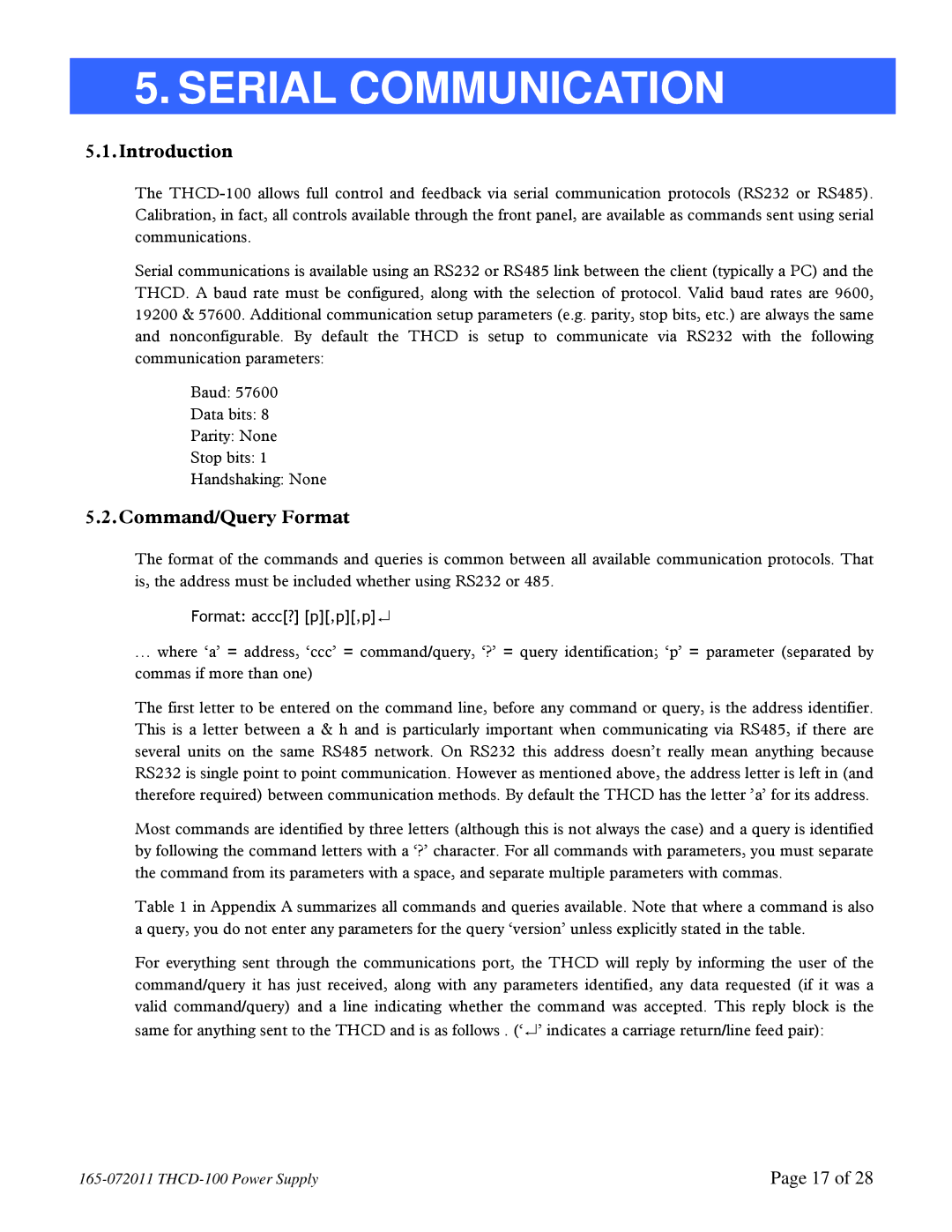5. SERIAL COMMUNICATION
5.1.Introduction
The
Serial communications is available using an RS232 or RS485 link between the client (typically a PC) and the THCD. A baud rate must be configured, along with the selection of protocol. Valid baud rates are 9600, 19200 & 57600. Additional communication setup parameters (e.g. parity, stop bits, etc.) are always the same and nonconfigurable. By default the THCD is setup to communicate via RS232 with the following communication parameters:
Baud: 57600
Data bits: 8
Parity: None
Stop bits: 1
Handshaking: None
5.2.Command/Query Format
The format of the commands and queries is common between all available communication protocols. That is, the address must be included whether using RS232 or 485.
Format: accc[?] [p][,p][,p]↵
…where ‘a’ = address, ‘ccc’ = command/query, ‘?’ = query identification; ‘p’ = parameter (separated by commas if more than one)
The first letter to be entered on the command line, before any command or query, is the address identifier. This is a letter between a & h and is particularly important when communicating via RS485, if there are several units on the same RS485 network. On RS232 this address doesn’t really mean anything because RS232 is single point to point communication. However as mentioned above, the address letter is left in (and therefore required) between communication methods. By default the THCD has the letter ’a’ for its address.
Most commands are identified by three letters (although this is not always the case) and a query is identified by following the command letters with a ‘?’ character. For all commands with parameters, you must separate the command from its parameters with a space, and separate multiple parameters with commas.
Table 1 in Appendix A summarizes all commands and queries available. Note that where a command is also a query, you do not enter any parameters for the query ‘version’ unless explicitly stated in the table.
For everything sent through the communications port, the THCD will reply by informing the user of the command/query it has just received, along with any parameters identified, any data requested (if it was a valid command/query) and a line indicating whether the command was accepted. This reply block is the same for anything sent to the THCD and is as follows . (‘↵’ indicates a carriage return/line feed pair):
Page 17 of 28 |
